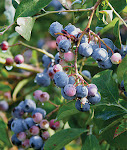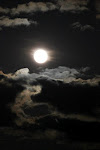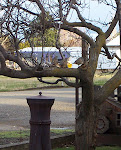Mason bees are invaluable pollinators for early-blooming fruit and nut trees. The solitary animals are active in their adult stage for only a few weeks in the spring—a period of time that coincides with the blooming of fruit trees. They are much more effective at pollinating than honeybees, are non-destructive, rarely (if ever) sting, making them welcome guests to the garden. They are active even when temperatures are too cold for honeybees to brave.
There are over 300 different species of mason bee. The two of the most common species found in North America are the Blue Orchard Bee and the Horn-Faced Bee, while the Red Mason Bee is common throughout Europe.
Smaller than a honey bee, these little bees live for only six to eight weeks but can visit and pollinate over 1,000 blooms each day of their short lives.
Blue orchard bees are about the same size as a honeybee but there are a few key points that help you tell them apart. Blue orchard bees are a dark metallic blue, not striped brown and orange like the honeybee. If you pay attention to where they carry their pollen you can also easily tell apart masons and other leaf cutters from honeybees – honeybees carry round balls of pollen on their hind legs.
Masons are solitary like most native bees. This means that each one tends to its own brood, instead of having a queen and worker bees. However, they seem to like the company of others of their kind and happily build their nests next to each other. They also readily accept the hollow tubes provided by the orchard grower for this purpose. This proves to be very beneficial to the fruit tree grower because it makes it easy to manage this valuable orchard helper.
Not only commercial fruit growers, but home gardeners too have the opportunity to have some orchard bees in their own gardens by placing hand-made or store-bought bee houses or bee blocks in their yards.
Horned-Faced Mason Bee is a native of Japan, where it is extensively used for fruit (apple and cherry) pollination. They were originally introduced to North America on the east coast in the 1960’s by Dr. Suzanne Batra, with the USDA Bee Research Laboratory, Agriculture Research Service, at Beltsville, Maryland.
Horned-faced mason bees are much smaller than orchard mason bees. They are about two-third’s smaller in size. Thus, they can set up cells in smaller nesting holes. However, they will readily adopt 5/16th inch orchard mason bee nesting holes. Being solitary bees, both horned-faced and orchard mason bees will co-exist together.
They derive their name from a distinctive horn on their face. These small bees are brownish colored with light, orange stripes on the abdomen. This gentle pollinator seldom stings. Its sting is similar to a mosquito bite.
Red Mason Bees are a spring-flying species of solitary bee that you are likely to encounter in your garden and local park. As their name suggests, Red Mason Bees nest in walls and use mud to build and line their nests. This species has gained a notorious reputation from the females' habit of excavating their nesting burrows and cells in crumbling or soft mortar joints, thereby, in time, undermining and possibly weakening the fabric of masonry. The bee also utilizes existing holes.
Females are relatively large bees, with a light-brown thorax, orange-red abdomen and two facial horns on the head. Males are smaller, with a conspicuous tuft of light hairs on their face and longer antennae. On the wing from March until June, Red Mason Bees require a supply of nectar and pollen from early-flowering shrubs and garden plants. They occupy a great range of habitats, with urban populations benefitting from the availability of garden bee hotels.
Widely distributed throughout much of Britain as far north as Perthshire. A common species, except in parts of northern England and in Scotland. A recent arrival in Ireland. There are a few old records from the Channel Islands. The species is found throughout much of the Palaearctic, the range extending from Sweden and Denmark, south to Spain and Morocco, and east to Japan.
 |
Horn-faced mason bee
|



















